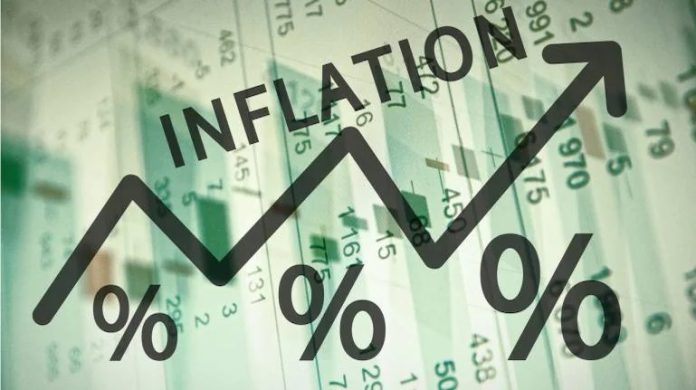ISLAMABAD: While painting an otherwise rosy economic picture at the fag-end of its rule, the caretaker government on Wednesday conceded the persisting inflationary trends and rising pressures on current expenditure mainly due to the policies of the government and the State Bank of Pakistan, respectively, continue to remain critical challenges, needing prudent policies of the next government to strengthen economic activities.
“The first half of FY24 has ended with economic stabilisation”, boasted the Ministry of Finance on Wednesday almost a week ahead of general elections while conceding that elevated inflationary “challenges persist in the form of supply chain disruptions and increased utility prices”.
Moreover, “the significant challenge is higher markup payments due to the high policy rate leading to a sharp rise in current expenditures”, said the Economic Advisors’ Wing of the Ministry of Finance in its monthly economic update & outlook with a disclaimer that “due to mounting markup payments in response to the high policy rate, the expenditure is expected to remain under pressure during the current fiscal year”.
For the outlook, the MoF expected that economic activities will strengthen during the second half of FY24 — contingent on the sustained implementation of sound and prudent economic policies and stability both on domestic and external fronts which will gear toward achieving the set growth target for the current fiscal year.
The report affirmed that the elevated prices of perishables and vegetables, coupled with increased utility costs (both electricity and gas), have contributed to the inflationary pressure. Also, the surge in onion export orders following the Indian ban has strained local supply and increased domestic prices. Specific commodities, such as tomatoes, witnessed price hikes due to supply disruptions caused by severe weather, intensifying the demand-supply gap. Similarly, chicken prices rose due to reduced supply, particularly from controlled sheds experiencing higher input costs.
It said there appeared a slight moderation in the inflation outlook in January compared to the preceding month. Though, yet, challenges persist in the form of supply chain disruptions and increased utility prices, the decline in fuel cost offers a promising counterbalance, potentially mitigating the overall impact on consumers and production sectors, the MoF said on a day it actually increased petroleum prices. At the same time, the ministry anticipated the inflation to remain at elevated levels well above 27 per cent.
In agriculture, the MoF reported an uptick in the first half of the current fiscal year compared to last year as crops have performed well. Wheat being the major crop of Rabi 2023-24 is expected to perform well as cultivation surpasses the target. On the downside, unprecedented weather shocks may affect productivity as January was the coldest and most important month for the early growth of Rabi crops in most of the agricultural plains of the country.
Industrial performance
In the industrial sector, it said the large-scale manufacturing usually followed the cyclical movements in main trading partners, but since it is focused on major industrial sectors and not on total GDP, it is somewhat more volatile than the cyclical component of GDP in Pakistan’s main export markets. The economic conditions in major export destinations have shown signs of improvement, signalling a favourable external environment that supports the industrial performance of Pakistan.
On the external front, the balance of payments data for December showed momentum of external sector stability as evident through the current account which turned to a surplus of $397 million, the surplus value observed after June 2023. This development is mainly due to the contained trade deficit — which decreased by 25.5pc and 23.5pc on a month-on-month and year-on-year basis, respectively, on the exports front, it increased significantly by 14.1pc on a year-on-year basis and 5.1pc on month-on-month basis. On the other hand, imports had been contained by 6.1 and 0.1pc on month-on-month and year-on-year basis, respectively. Another contributing factor to the current account surplus was the workers’ remittances which grew 5.4 and 13.4pc on a month-on-month and year-on-year basis, respectively.
The revival in domestic economic activities along with a stable exchange rate is contributing to external sector stability. It is expected that the continuation of these developments and policies to increase exports and remittances will further translate into improved trade balance and current account during the second half of FY24.

































